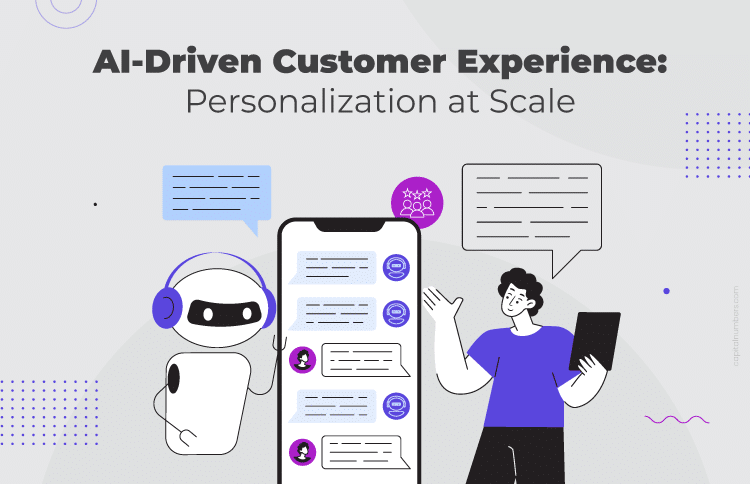What are The Key Challenges in Enterprise Mobile App Development?
Table of Contents
In today’s tech-savvy world, mobile applications have become a popular source of information. It is believed that mobile application plays an important role in achieving the objectives and goals of the organisations, or enterprises. Nowadays, the mobile applications have become a reflection of your brand. Enterprises are now adopting the Mobile App Development in order to drive towards growth and transform their workflows. With the increase in the number of mobile users and popularity of mobile applications, the problems for enterprise mobility solution developers have increased.
In this article, we will discuss some of the key challenges faced by the enterprises during mobile app development. So, let us explore such key challenges.
Finding the right talent to create the best mobile app development team
One of the most challenging factors for enterprises is to fill the talent gap in order to develop mobile applications. Mobile app development requires highly skilled personnel which possess an exceptional level of expertise.
Another challenging part that comes after creating a mobile app development team is allocating the roles, especially UI/UX designers. For example, while creating a customer-centric application, the developers are required to keep the design and user experience on high priority. It is important that the app must function properly and delight its users.
Finding such talent and recruiting them is a very difficult and time-consuming process. Also, it might be costly for enterprises to maintain a team of such experts. Therefore, most of the enterprises are now adopting a new way to deliver apps i.e. mixed sourcing model. In this model, the organisations outsource their mobile app projects to a third party or mobile app development partners. It helps enterprises by reducing the overall cost of the project. Now, they can deliver the final product to their clients before the deadline.
Enhancing the security of the mobile applications
The prominent factor that needs to be considered by each organisation while creating a mobile application is security. It is the most common challenge that most of the enterprises or organisations faces. Whether you are developing a customer-centric application or an application for your internal purpose, it has to be secured.
It is important for the developers to mitigate any possible vulnerability before it gets exploited by the hackers. Some important points that need to be followed in order to ensure security are as follows:
- SSL certificates: You can use SSL certificates in order to notify users that this app is safe and secure to use. The SSL certificates are used as a sign of security by the developers. It helps in encrypting the transmission of data and also enables the user to connect to the server in a secured manner.
- Encryption: The data stored on mobile devices can be easily accessed by connecting it to a computer system. After connecting the device, the users can easily copy the confidential information which may result in severe losses to the enterprise. Encryption helps enterprises to provide protection against the mobile device security threats. The user needs to enter the required pin or password in order to connect to the mobile device and access data.
Challenge of creating a better User Experience (UX)
The success of a mobile application depends upon how the user feels while accessing it, i.e. the user experience. It is the user experience which can break or make an app. It is very challenging for the enterprise mobile application developers that the app must meet all the requirements related to the corporate branding, and function properly. They are required to keep the user-experience on high priority.
Some of the factors which enhance the user experience are as follows:
- It should not take so much time to connect to the server.
- The content should be mapped properly. The user should not get confused while accessing the application.
- It must have a responsive design.
- It should be simple and easy to use. The simplicity of the application makes it popular among users.
- It should contain attractive icons instead of traditional images.
Challenge of device fragmentation
Initially, the enterprise app developers were focused towards creating solutions only for few platforms and operating systems. But, now device fragmentation has become an emerging challenge for all the mobile app developers. The developers are required to design and develop apps which can work on several platforms and supports plenty of mobile devices. The developers can optimise their testing and development efforts with the help of the following methods:
- Try to identify the most favourable or likely platforms on which the application will run.
- Try to design or create graphics which are globally recognisable.
- Try to implement the most reliable development practices among all the leading platforms in order to achieve consistency while developing mobile applications.
Challenge of selecting best among all the development technologies
Cost is one of a most crucial factor which is considered by each enterprise. In the case of a mobile app, it depends upon the underlying technology. The developers need to be very selective while choosing the underlying technology.
Most of the developers implement cross-platform technologies such as HTML5, CSS3 as it offers so many benefits to the enterprises. It reduces the overall cost, takes less time as compared to other technologies, and is portable across the other platforms. However, it has so many limitations with which developers need to struggle such as local data storage, security issues, and many others.
Therefore, most of the enterprise app developers are now following the native app development approach. The native applications are those applications which are developed for a specific platform. These applications can take the advantage of the underlying OS and other programs very effectively.
There are various advantages of native app development which are as follows:
- The speed and performance of the application can be improved with native development.
- The requirement of unique UI/UX can be met.
- The native application performs better with the hardware.
- The native development approach helps developers to integrate new features or install patches when released.














